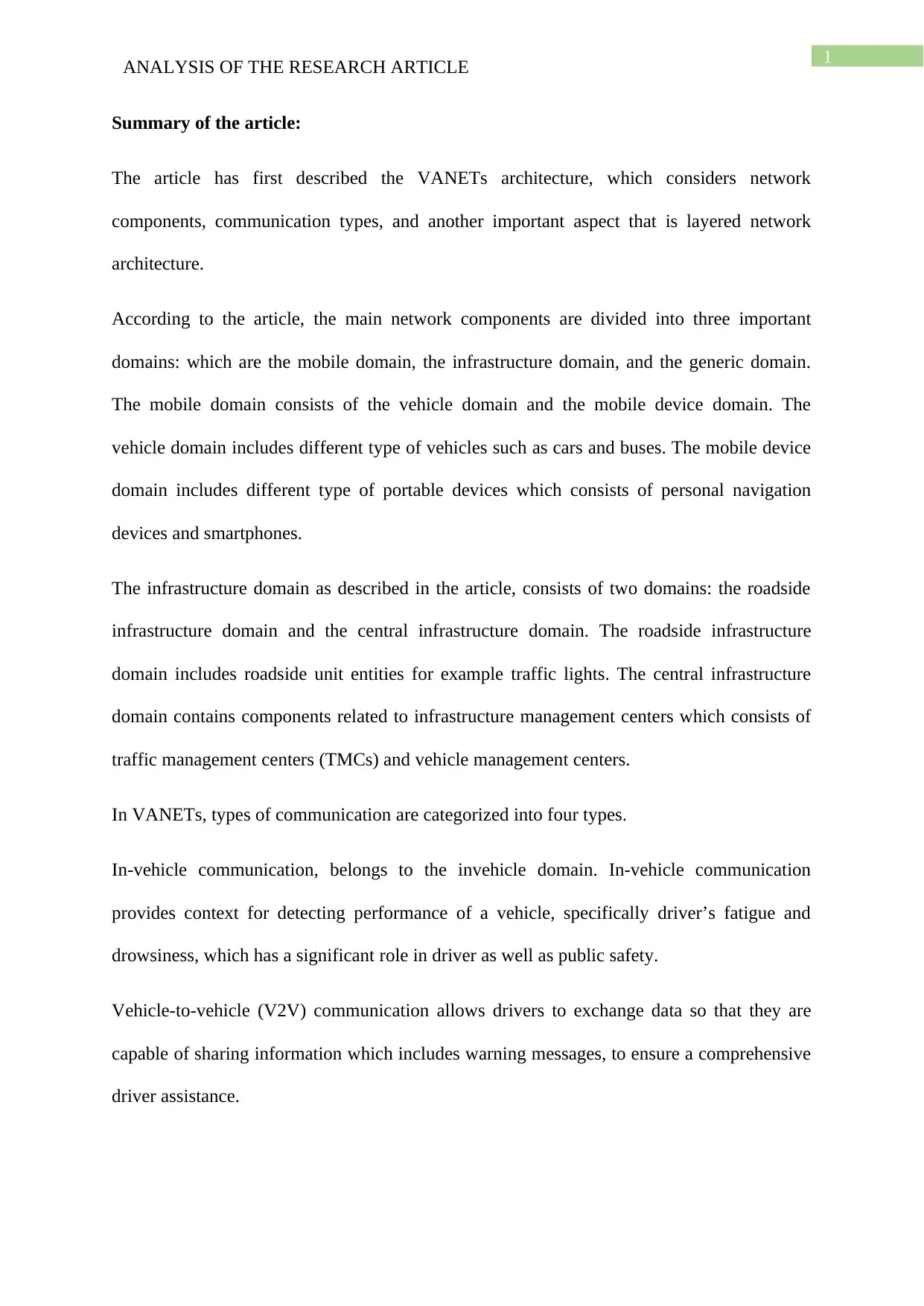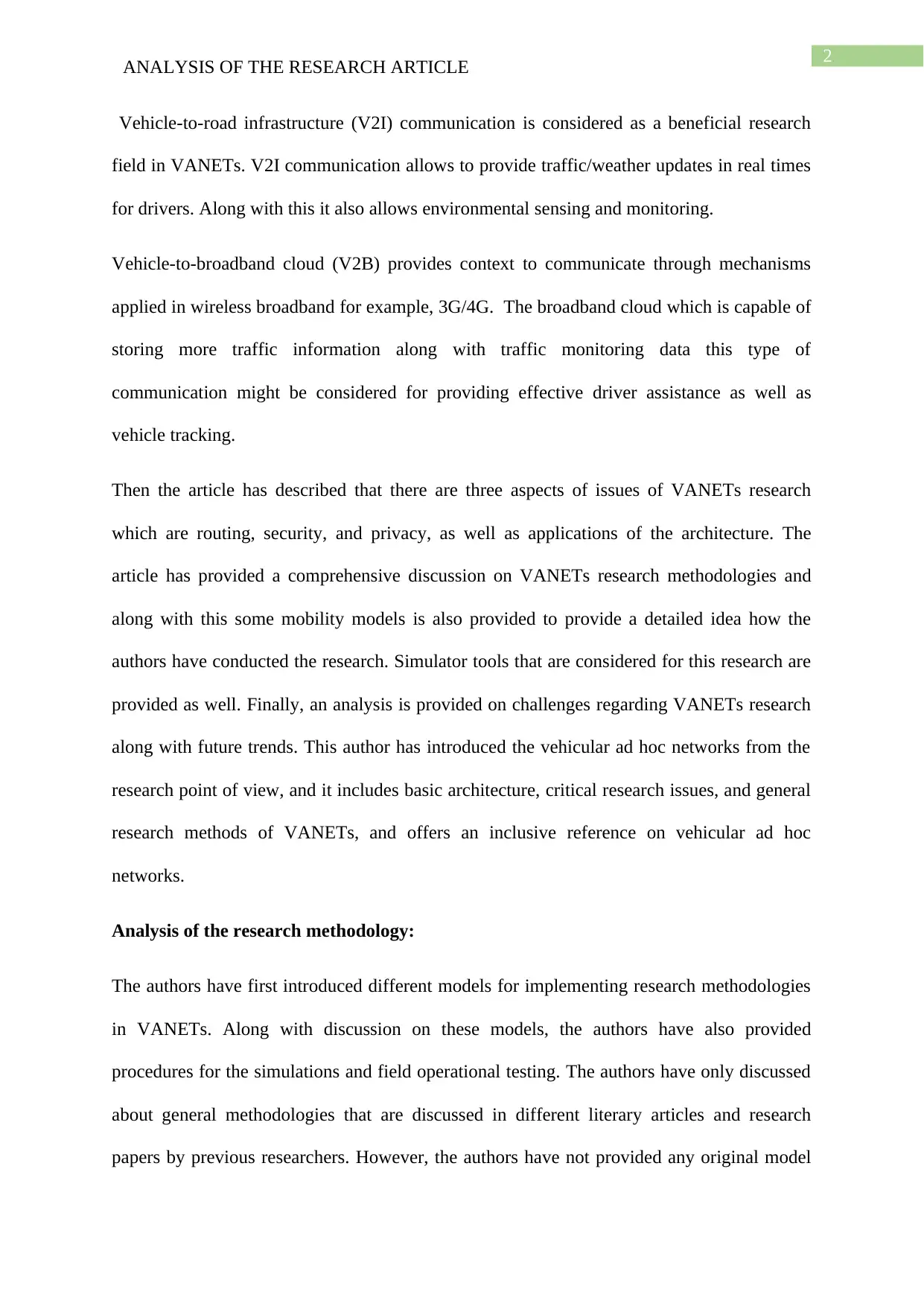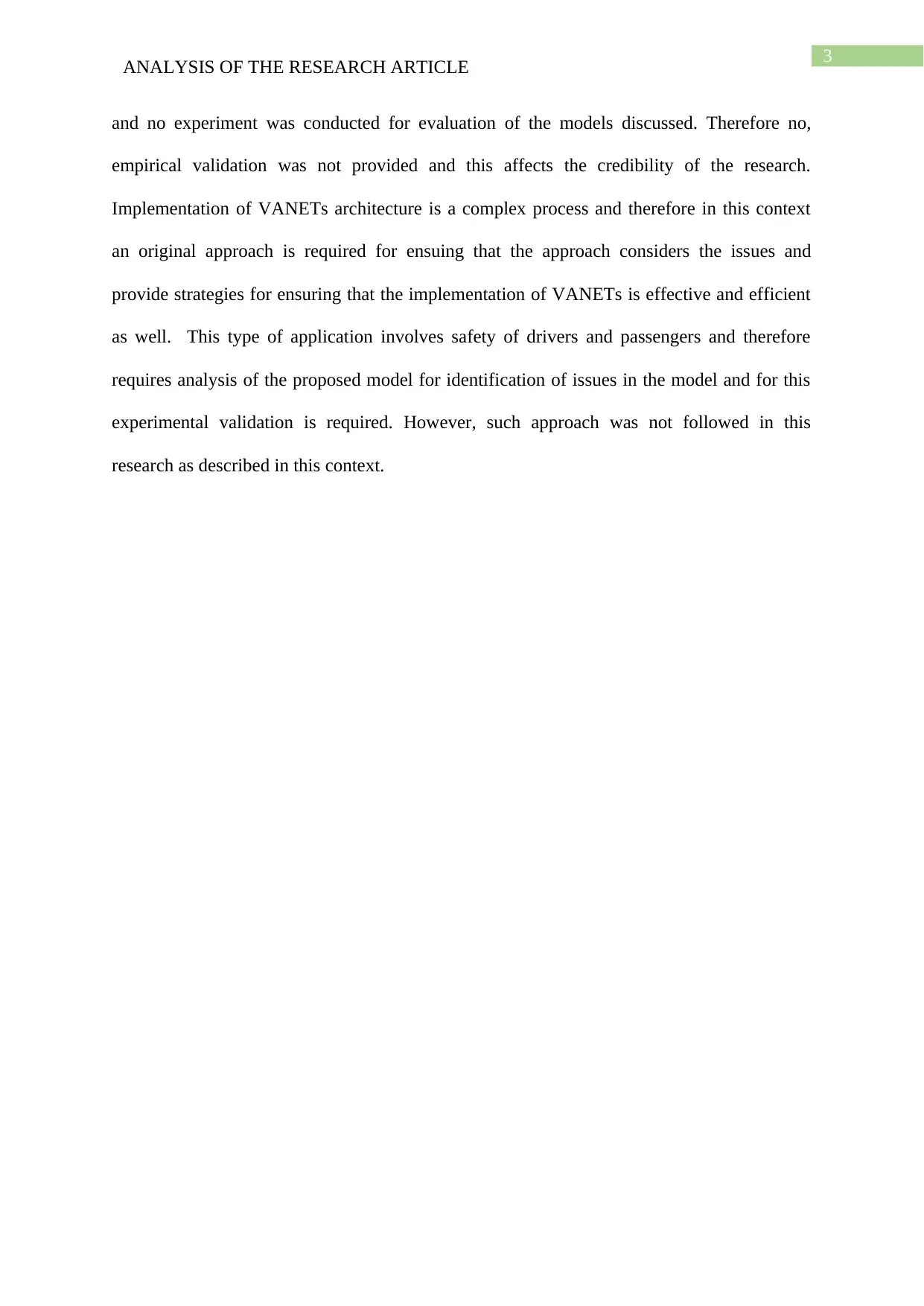Analysis of a Research Article on Vehicular Ad Hoc Networks (VANETs)
VerifiedAdded on 2022/11/15
|4
|717
|193
Report
AI Summary
This report provides an analysis of a research article focusing on Vehicular Ad Hoc Networks (VANETs). The article begins by describing the VANETs architecture, including network components categorized into mobile, infrastructure, and generic domains, and communication types like in-vehicle, V2V, V2I, and V2B. It highlights key research issues such as routing, security, and privacy, along with applications and research methodologies, including mobility models and simulator tools. The analysis also covers challenges and future trends in VANETs research. The report then critically examines the research methodology, noting the lack of original models and empirical validation, which affects the credibility of the research. The report emphasizes the need for original approaches and experimental validation, particularly given the safety-critical nature of VANETs applications.
1 out of 4










![[object Object]](/_next/static/media/star-bottom.7253800d.svg)